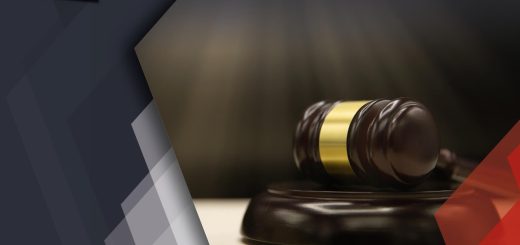Patent Licensing – A Smart Approach to Make Money
Patent Licensing – A Smart Approach to Make Money : To how many question can a patent license be a solution too! Can it be the one step solution for marketing the patented invention or the search for a novel item to extend your product offering or a possible solution to fix a patent infringement debate? Well a patent license might be the solution to all the issues.
In the current scenario with developing economy and different ways to earn a living, licensing has been proved in all likelihood to be the most lucrative approach. Fundamentally speaking about licensing, it is the offering of a protected innovation to a man or business that desires to produce it for a benefit; whether it is a patent, copyright, or an idea. Always a smart way to make money!
To understand in a simple language a license is a document or an agreement offering authorization to accomplish something. From one aspect, a patent is a privilege to prevent others from making, utilizing, or offering an invention and the second aspect is that a patent does not give its proprietor the right to make, utilize, or offer the protected innovation. It is conceivable to have a patent that can’t be utilized without infringing other parties’ patent. Hence a license is not a right to misuse the protected innovation, rather an agreement by the patent proprietor (licensor) that he won’t implement his privilege against the party wishing to use the licensed creation (licensee).
The objective of any agreement is to acquire a reasonable, unambiguous document that precisely depicts the exchange. There are three essential elements of an agreement:
• characterizing the rights of each party;
• characterizing each party’s commitments;
• characterizing each the possible remedies if the commitments are broken.
The licensee should unfailingly know that there might be different patents that cover the item and should meticulously conduct a clearance search preceding an agreement to recognize different licenses that may frame a boundary to misusing the authorized innovation, or as guarantees from the licensor that practice the authorized innovation won’t infringe any other patent party.
Threshold Issues
While licensing a patent, a perimeter of usage can be developed to ensure the boundaries and limited use of a patent. It is obvious that the licensee would like to opt for the exclusive license as it lessens the competitors, whereas the licensor would opt for the non-exclusive agreement which will increase its profit. Therefore, it can be better understood now that a threshold issue is determining whether an agreement (i.e. licensing) will be exclusive or non-exclusive.
The question of whether the licensor is permitting the licensee the privilege to exploit the creation in any innovative field or just in a constrained field defines another threshold issue of “Field of issue”. Elaborating, that in a permit, the licensor may allow the licensee the privilege to use the authorized innovation in a particular field and retain the rights to use the creation on various other fields giving the licensor an upper hand of the revenue. However, if the licensee obtains an unrestricted land area, the sale can be made at a broader range and in different market targeting and generating more revenue and increased royalty.
The land area might be another approach to restrict the extent of the permit, resulting in giving the licensee the privilege to use the authorized innovation in specific zones of the nation. On the off chance that there will be confinements on the field of utilization or land area, there must be expressed in the agreement.
Royalties
The most imperative commitment of the licensee is the installment of the royalties. Both the parties can formulate a structure of payment in the most suitable manner which might be one-time payment, milestone payments, a fixed sum on the periodical basis, percentage of sales, a cross-license of the licensee’s innovation to the licensor, or a combination of the arrangement.
In order to generate assured royalties, the licensor must refrain from the circumstance where he has solely authorized the patent and the licensee is not advertising the innovation due to which no royalties will be produced. On the other hand the licensee needs to maintain a strategic distance from a circumstance where he is committed to pay royalties however cannot make any profit by the sale.
Another task is to determine the responsibility of enforcing the licensed patents against the infringer. In case of an exclusive licensing, the licensee can enforce a patent against an infringer, on the other case of non-exclusive licensing; the licensee cannot enforce and should depend on the licensor to watch the market. However, the licensor is not committed to sue outside infringers unless the license states.
One must always note that a fruitful license can soon turn unrewarding for the licensor in the event that he is required to enforce his patent against numerous infringers. On the other hand, if the licensor does not watch the market, soon the licensee committed to pay royalties can’t contend in cost against the infringers and may have no response.
An essential prerequisite in the agreement is that any prosecution appeal made in the home city of either of the parties can be a loss to the other party. Since contract laws change from state to state, the decision of which state’s law will administer the permit may support one party over the other. Also, the license may provide other possible remedies like medication or arbitration which can be considered. Additionally “liquidated damages” statement might be incorporated to settle the damages during a breach.
As a general rule, the license agreement will be one-sided for either of the parties. Regardless of whether the favored party is the licensor or the licensee, the agreement will depend to a great extent on the relative negotiation of either of the parties. However, a party with the better dealing position ought to be mindful so as not to manhandle the position.
It might be feasible for a potential licensor to utilize a better dealing position for developing a negotiation for higher royalty rate, but it might cause damage due to the increased cost of the item and less sale of product, with the net impact that there are no sales (and in this manner no royalties ) by any means.
Conclusion
In this way, licensing and no prosecution is the most ideal approach to adapt licenses and produce income. In spite of the fact that licensing prompts patent wars and prosecution, it is a guaranteed approach to gain by one’s creations.




